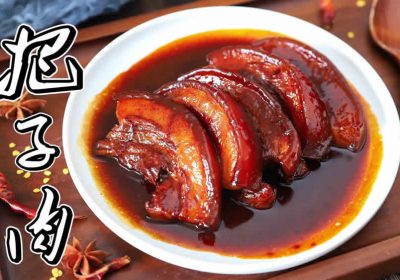Anhui cuisine (徽菜 huī cài), rooted in the Huangshan Mountains and ancient Huizhou culture, celebrates wild ingredients, slow-fire techniques, and rustic elegance. From fermented delicacies to hearty clay pot stews, here are 10 dishes that embody Anhui’s culinary wisdom—forged by mountains, preserved by time.
1. Stinky Mandarin Fish (臭鳜鱼 chòu guì yú)
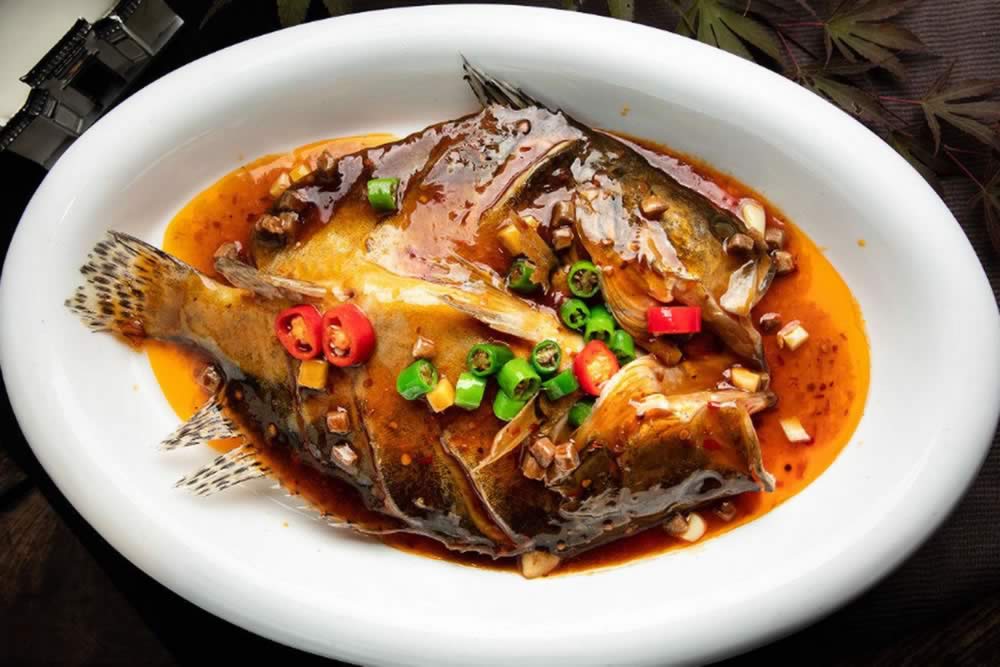
Origin: Huizhou merchants, Ming Dynasty
Fermented Magic: Freshwater fish dry-cured for days, creating a pungent aroma that transforms into umami richness when braised.
Cultural Quirk: Born from necessity—merchants preserved fish during long journeys, creating an accidental masterpiece.
2. Hairy Tofu (毛豆腐 máo dòu fu)
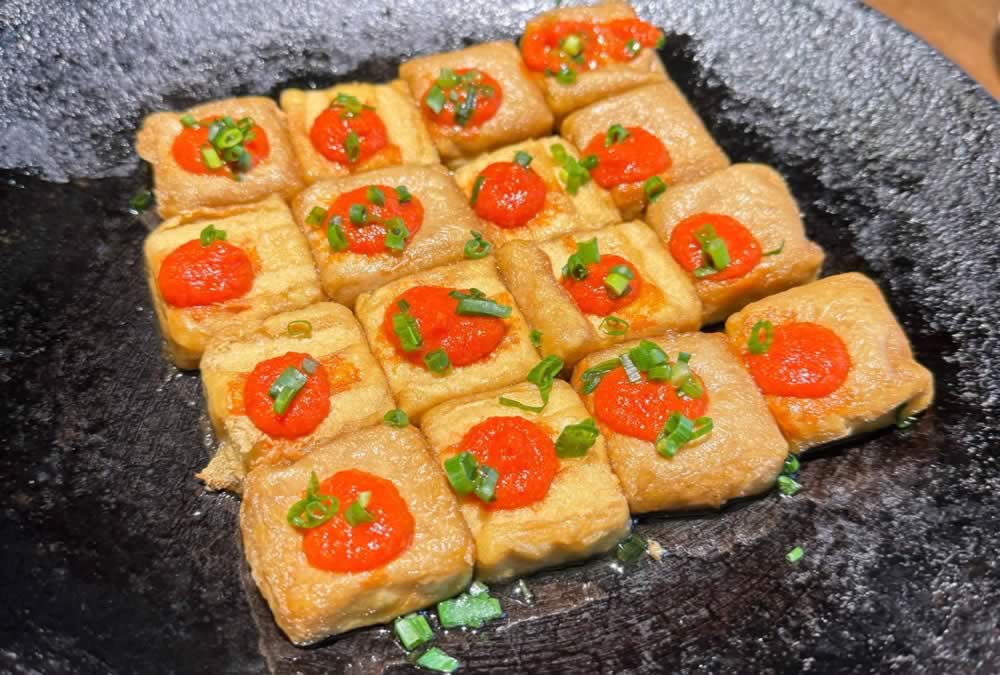
Microbial Art: Soybean curd fermented until covered in edible white mold, pan-fried to crispy perfection.
Textural Paradox: Crunchy shell, creamy center, served with chili sauce. A Huizhou street food icon.
3. Hu Shi’s Imperial Pot (胡适一品锅 hú shì yī pǐn guō)
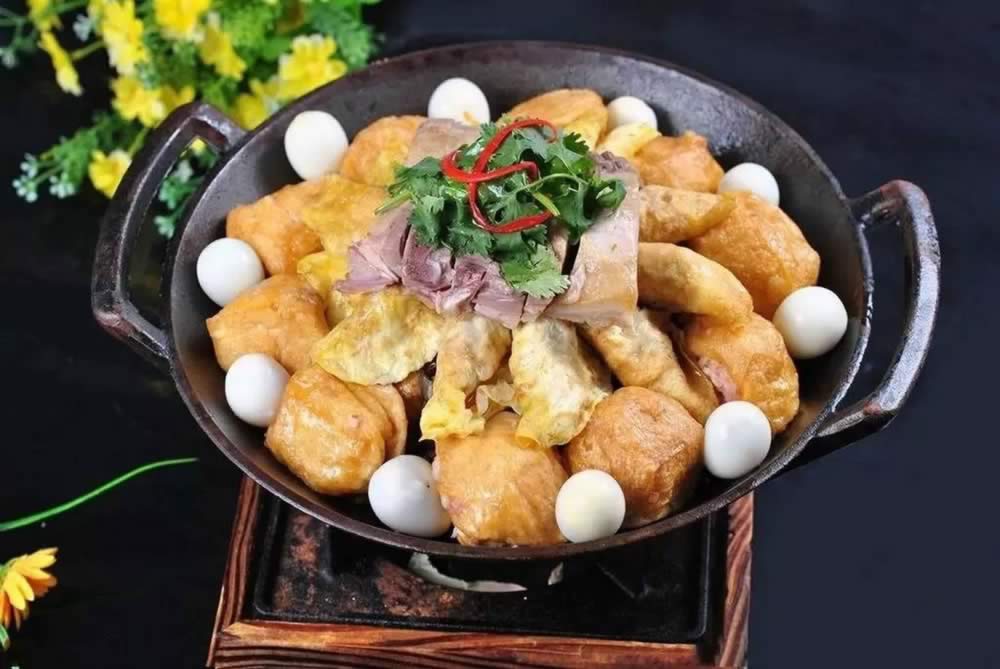
Scholarly Feast: Layers of chicken, pork, tofu, and vegetables simmered in a copper pot.
Historical Link: Named after scholar Hu Shi, whose family served this dish to honor guests.
4. Huangshan Braised Pigeon (黄山炖鸽 huáng shān dùn gē)
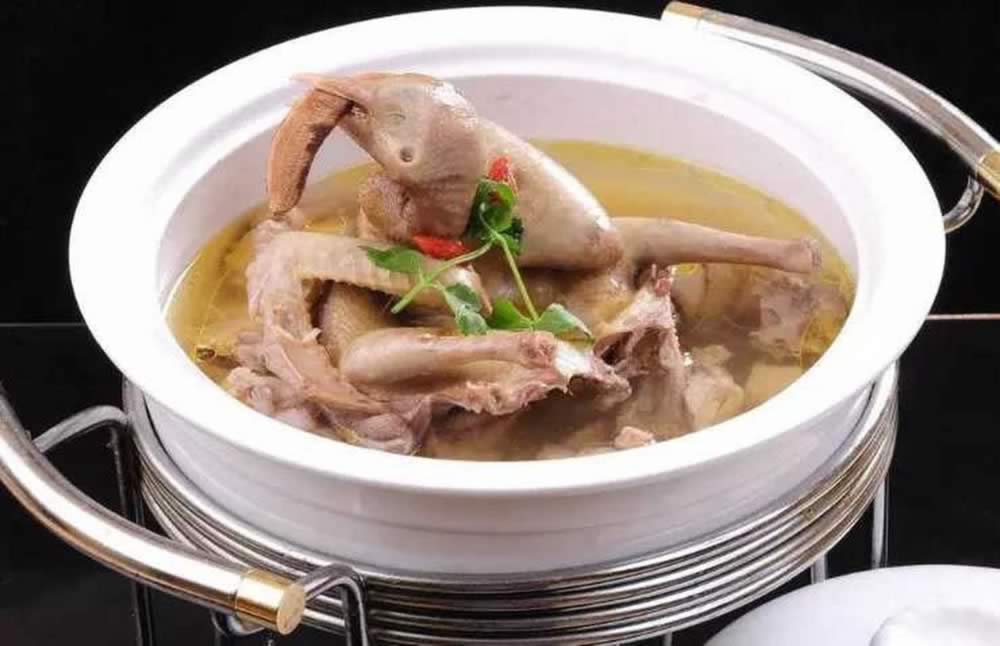
Mountain Essence: Free-range pigeon stewed with wild mushrooms and bamboo shoots from Huangshan.
Medicinal Touch: Believed to boost vitality in traditional Chinese medicine.
5. Wenzheng Mountain Bamboo Shoots (问政山笋 wèn zhèng shān sǔn)
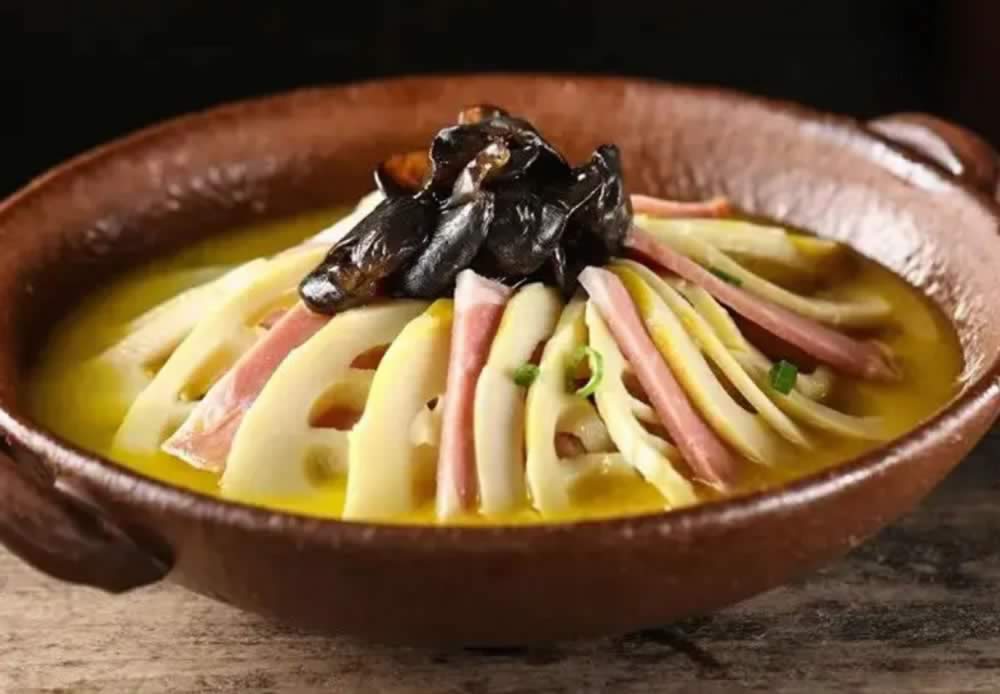
Spring’s Treasure: Tender bamboo shoots from She County’s Wenzheng Mountain, stir-fried with ham and sesame oil.
Poetic Freshness: A Qing Dynasty tribute dish praised as “蔬中第一品” (first among vegetables).
6. Knife-Board Cured Pork (刀板香 dāo bǎn xiāng)
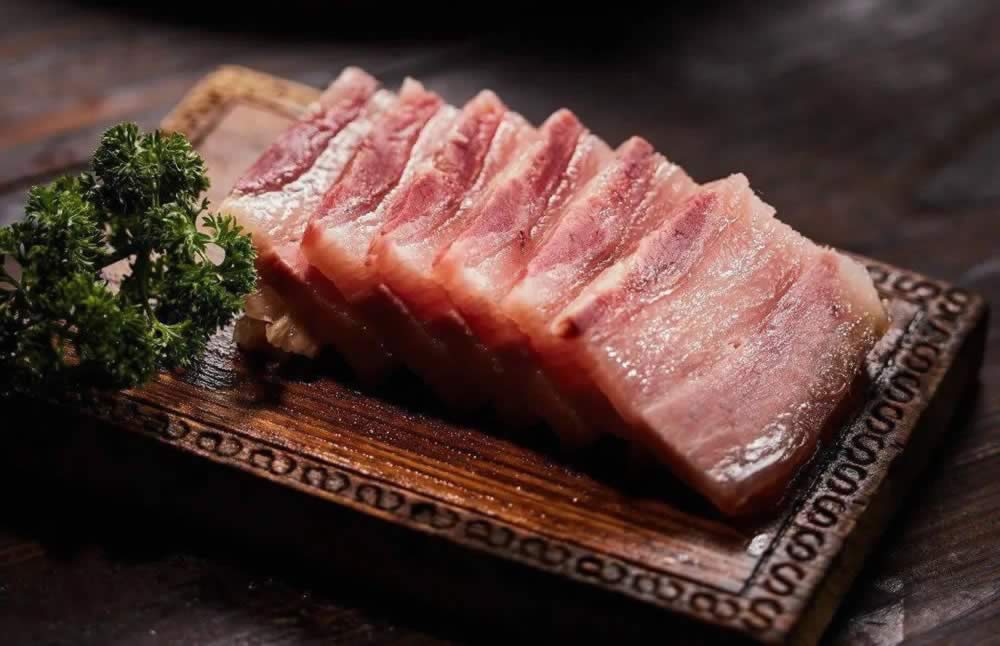
Smoky Simplicity: Pork belly cured with salt and air-dried, steamed on a cedar wood board to absorb earthy aromas.
Rural Charm: The wood’s scent infuses the meat—a farmer’s homage to nature.
7. Huainan Beef Soup (淮南牛肉汤 huái nán niú ròu tāng)
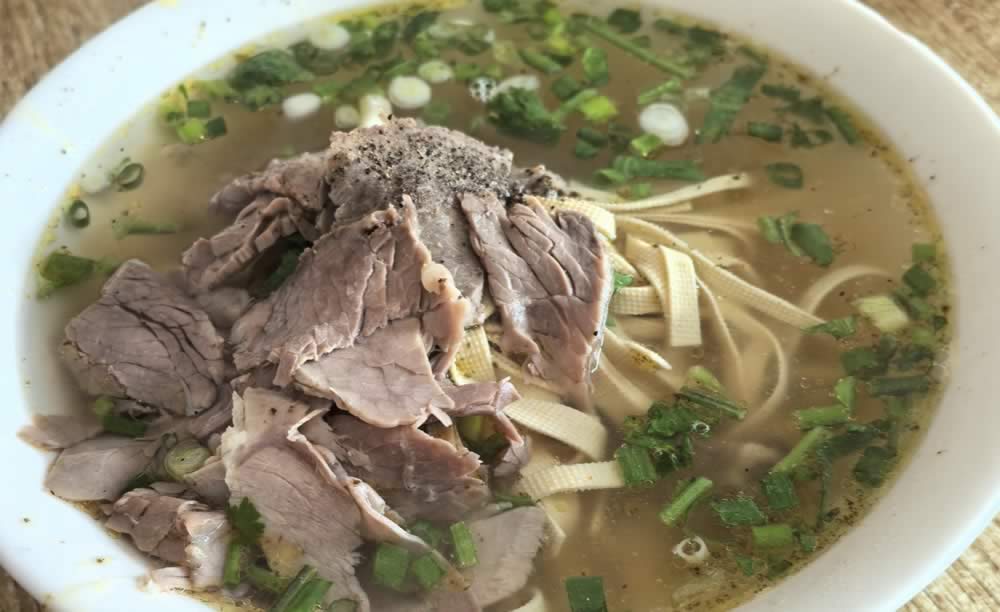
Winter Warmth & Energy: A hearty broth simmered for hours with beef bones, served with tender beef slices, vermicelli, and cilantro.
Miners’ Legacy: Originated in Huainan’s coal-mining communities, where laborers relied on this calorie-packed soup to endure freezing winters.
8. Kudzu Root Dumplings (葛粉圆子 gě fěn yuán zi)
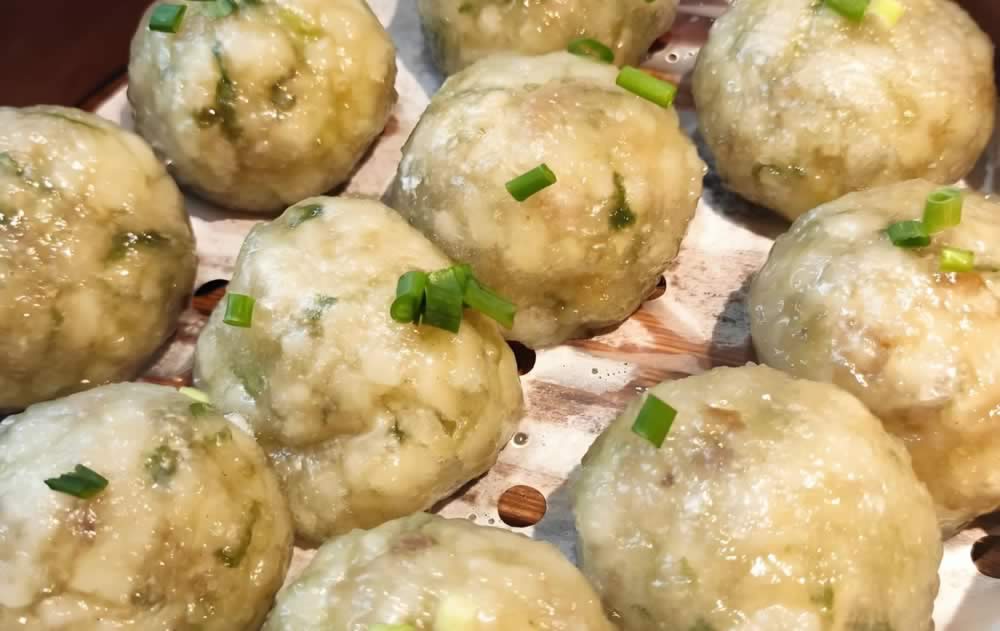
Mountain Staple: Glutinous dumplings made from kudzu root starch, stuffed with pork and mushrooms.
Survival Food: Created by villagers during crop shortages, now a nostalgic delicacy.
9. Anhui Red-Braised Pork (徽州红烧肉 huī zhōu hóng shāo ròu)
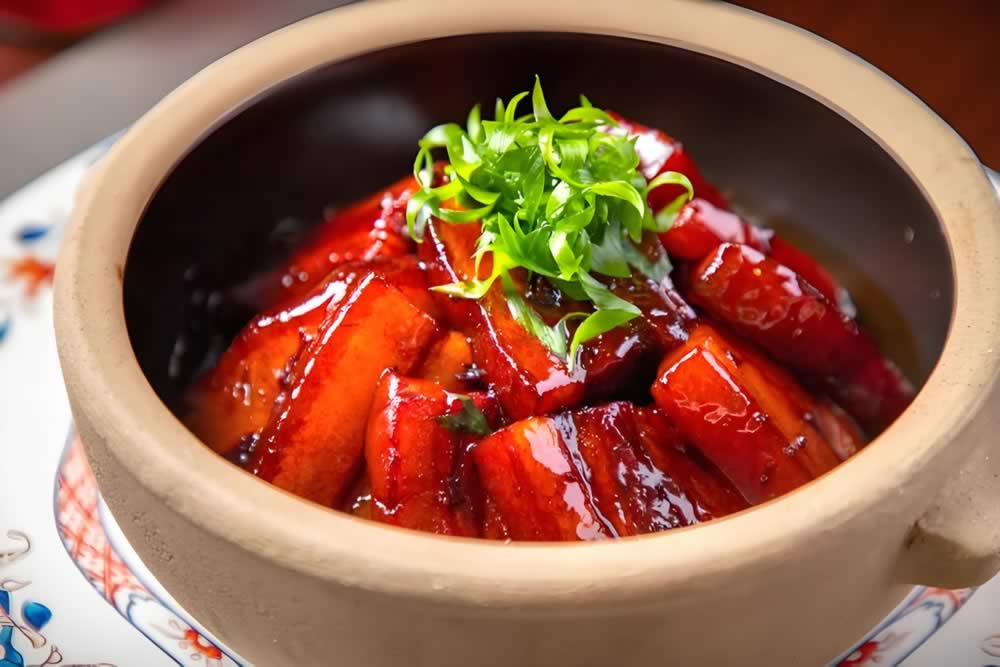
Caramelized Glory: Pork belly braised with rock sugar and soy sauce, glazed to a mahogany sheen.
Fire Mastery: Slow-cooked over hardwood embers to achieve melt-in-mouth tenderness.
10. Labā Tofu (腊八豆腐 là bā dòu fu)
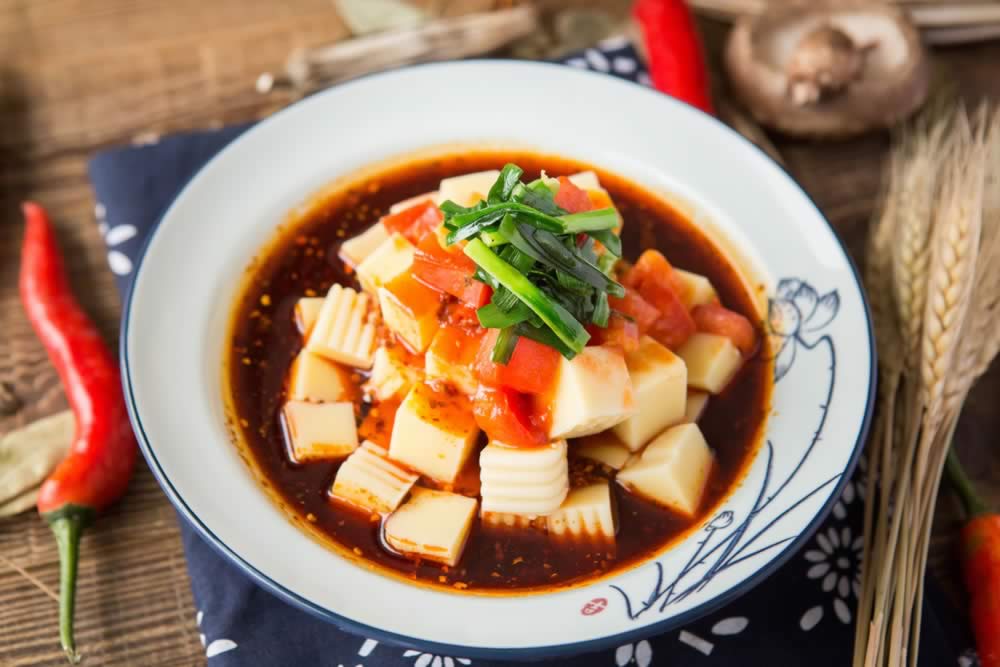
Winter Ritual: Tofu pressed, salted, and sun-dried during the Labā Festival (腊八节).
Preservation Wisdom: Chewy texture with nutty undertones—eaten sliced or stir-fried.
Why Anhui Cuisine Tastes of Time
Anhui chefs are culinary alchemists—turning mountain herbs, fermented curds, and humble pork into profound flavors. Unlike Jiangsu’s refinement or Sichuan’s heat, Anhui embraces 原汁原味 (yuán zhī yuán wèi – the essence of ingredients). Each dish whispers of Huizhou’s ancient trade routes, Huangshan’s misty peaks, and the resilience of those who cooked with what the land provided.
 Chinatodo
Chinatodo
